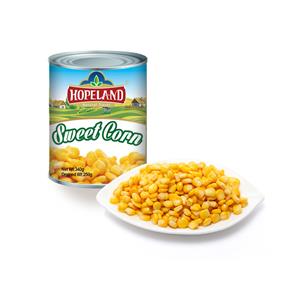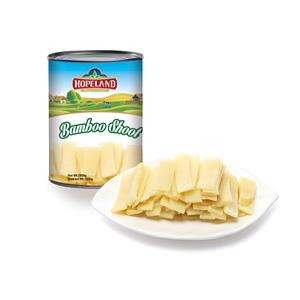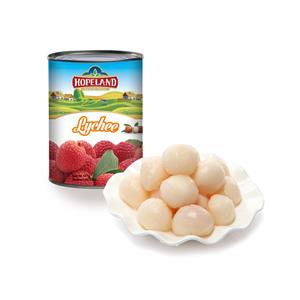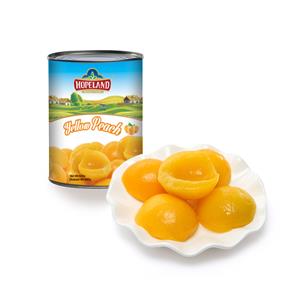Technical Requirements for Canned Fish
Canned fish is a popular and convenient food product consumed around the world for its rich nutritional value, long shelf life, and ease of use. It is made from fresh or frozen fish that undergoes a series of precise processing steps to ensure safety, flavor, and quality preservation. These steps include cleaning, cooking, canning, sealing, and sterilization. The result is a shelf-stable product that retains much of the fish’s original taste and nutrition.
This article explores in depth the technical requirements, classifications, sensory indicators, and production standards that govern the manufacturing of canned fish, focusing on quality control, food safety, and consumer satisfaction.
Classification of Canned Fish
Canned fish products are generally categorized based on the processing and flavoring methods used. Each method yields a different taste profile, texture, and appearance. The main categories include:
Braised Canned Fish
In this method, fish is slowly cooked in a savory soy-based sauce, often with ingredients like ginger, garlic, and chili. This results in a rich, flavorful product with tender meat and a dark sauce.Tomato Sauce Canned Fish
This style uses a tomato-based sauce, typically with added spices, sugar, and vinegar. It's one of the most popular canned fish styles worldwide, known for its tangy and slightly sweet flavor.Fresh-Fried Canned Fish
The fish is lightly fried before being canned, which gives it a firmer texture and distinct aroma. This type may be combined with either oil or sauce.Steamed Canned Fish
A healthier option that involves steaming the fish before canning, allowing it to retain its natural flavor with minimal seasoning.Smoked Canned Fish
The fish is first smoked to impart a distinctive aroma and flavor, then sealed in cans. It’s highly valued for its intense taste and longer shelf life.Oiled Canned Fish
This method preserves fish in edible oils such as soybean, sunflower, or olive oil. The oil not only helps preserve the fish but also enhances its taste and texture.Water-Packed Canned Fish
In this variant, the fish is preserved in water or lightly salted brine. This allows the natural flavor of the fish to come through without being overpowered by seasonings or oils.
Each type must meet strict technical and regulatory standards to ensure safety and product consistency.
Technical Requirements Overview
To ensure consumer safety and product reliability, canned fish must adhere to comprehensive technical requirements. These are generally outlined in national food safety standards or regional industry guidelines. Below are the main criteria that must be fulfilled during production:
1. Raw Material Requirements
Fish Quality: Only fresh or properly frozen fish with no signs of spoilage, disease, or contamination should be used. Common fish used include sardines, mackerel, tuna, anchovies, salmon, and herring.
Water & Oil: Clean, potable water must be used in production. Oils should be refined, odorless, and meet food-grade standards.
Other Ingredients: Seasonings, sauces, and additives must be approved for food use and used within safe concentration levels.
2. Processing Conditions
Hygiene: The entire production process must be carried out in a hygienic environment. Workers should follow strict hygiene protocols.
Sterilization: Canned fish must be heat-treated at appropriate temperatures (typically above 116°C or 240°F) for a set time to destroy all pathogenic microorganisms and spores.
Sealing: Cans must be vacuum-sealed using appropriate technology to ensure air-tight closure and prevent contamination.
Sensory Evaluation Index
One of the key methods to assess the quality of canned fish is through sensory evaluation, which examines the appearance, texture, taste, and smell of the product. Sensory indicators serve as quick, practical tools to determine whether the canned product meets consumer expectations and quality standards.
Container Requirements
Before even opening the can, the exterior must meet the following conditions:
Sealing: The can should be fully sealed with no signs of leakage or deformation.
No Swelling: A bulging lid indicates gas formation due to bacterial activity—such cans must be discarded.
No Rust: The can’s outer surface should be free from rust or damage.
Internal Coating: The interior coating (if any) must remain intact, with no peeling or flaking, to prevent contamination of the food inside.
Contents Appearance, Texture & Aroma
Once opened, the canned fish should be assessed according to these sensory criteria:
| Indicator | Requirement |
|---|---|
| Appearance | Intact fish pieces or fillets, not overly broken or disintegrated. Sauce should have even consistency. |
| Color | Characteristic of the processing method used (e.g., bright red for tomato sauce, golden brown for braised). No discoloration or mold. |
| Smell | Pleasant and characteristic of the fish and seasoning. No sour, rotten, or metallic odor. |
| Taste | Balanced flavor according to the style—savory, slightly salty or tangy. No bitterness or off-flavors. |
| Texture | Firm yet tender fish meat. Not mushy, dry, or rubbery. Consistent with the fish type and processing. |
Physical and Chemical Requirements
In addition to sensory criteria, canned fish must meet certain physical and chemical indicators, which may vary by country or region. Some of the key requirements include:
Moisture Content: Controlled within a specific range to prevent microbial growth and ensure shelf stability.
Salt Content: Typically kept below 2% in the final product for taste and health reasons.
Fat Content: Depends on the type of fish and processing method. Must be consistent with labeling.
pH Level: Often maintained between 5.5 and 6.5 to inhibit microbial growth.
Microbiological Safety Standards
Microbial contamination is one of the greatest concerns in canned food. As such, stringent sterilization and microbial testing procedures are mandatory:
Sterility: Cans must be commercially sterile, meaning that all pathogenic microorganisms and spores are destroyed.
Pathogen Testing: Samples must be tested for bacteria such as Clostridium botulinum, Salmonella, Listeria monocytogenes, and others.
Storage Stability: Canned fish should remain stable without spoilage for the duration of its shelf life, which typically ranges from 1 to 5 years depending on the type.
Packaging and Labeling Requirements
Proper packaging and accurate labeling are not only important for marketing but also for ensuring product traceability and consumer safety.
Packaging Standards
Can Material: Must be food-grade, corrosion-resistant, and compliant with regulatory standards (e.g., tin-plated steel or aluminum).
Lid and Seal Integrity: Cans must have tamper-evident seals and be vacuum sealed to prevent air ingress.
Packaging Size: Varies from single-serving (e.g., 100g) to bulk cans (e.g., 1kg), depending on market needs.
Labeling Standards
Each can must include the following information clearly and legibly:
Product name (e.g., "Canned Mackerel in Tomato Sauce")
Net weight and drained weight
Ingredients list
Allergen information
Manufacturer name and address
Production date and shelf life
Storage instructions
Nutrition facts (as per local regulations)
Country of origin
Certification symbols (e.g., HACCP, ISO 22000, FDA approval)
Misleading or incomplete labels are considered violations and may result in product recalls or penalties.
Storage and Distribution Requirements
Canned fish, though stable, still requires proper storage and handling to maintain quality and safety until consumption:
Temperature: Should be stored in cool, dry environments (ideally below 25°C or 77°F).
Humidity: Must be kept below 75% relative humidity to avoid can corrosion.
Handling: Cans must be protected from physical damage, exposure to sunlight, and temperature extremes during transportation and storage.
Quality Control and Inspection Procedures
Quality assurance plays a vital role throughout the canned fish production process. It includes:
Raw Material Inspection: Visual, smell, and chemical analysis to ensure fish freshness.
In-Process Controls: Monitoring of sterilization temperature, vacuum pressure, filling levels, and sealing tightness.
Finished Product Testing:
Microbiological tests
pH and chemical content analysis
Can seam integrity tests
Sensory panel evaluations
Batch Record Keeping: Essential for traceability in the event of recalls or quality issues.
Conclusion
The production of canned fish is governed by detailed and rigorous technical requirements designed to guarantee consumer safety, maintain product integrity, and preserve nutritional value. From the initial selection of raw materials to the final product that appears on store shelves, every step is controlled and inspected to meet national and international standards.
Whether you’re enjoying a can of smoked sardines on toast or a comforting tomato-sauce mackerel with rice, it’s important to recognize the complex science and engineering that ensure your food is safe, flavorful, and reliable. As global demand for convenient protein sources increases, canned fish remains a dependable and nutritious choice—provided it meets the high technical and quality standards the industry demands.





